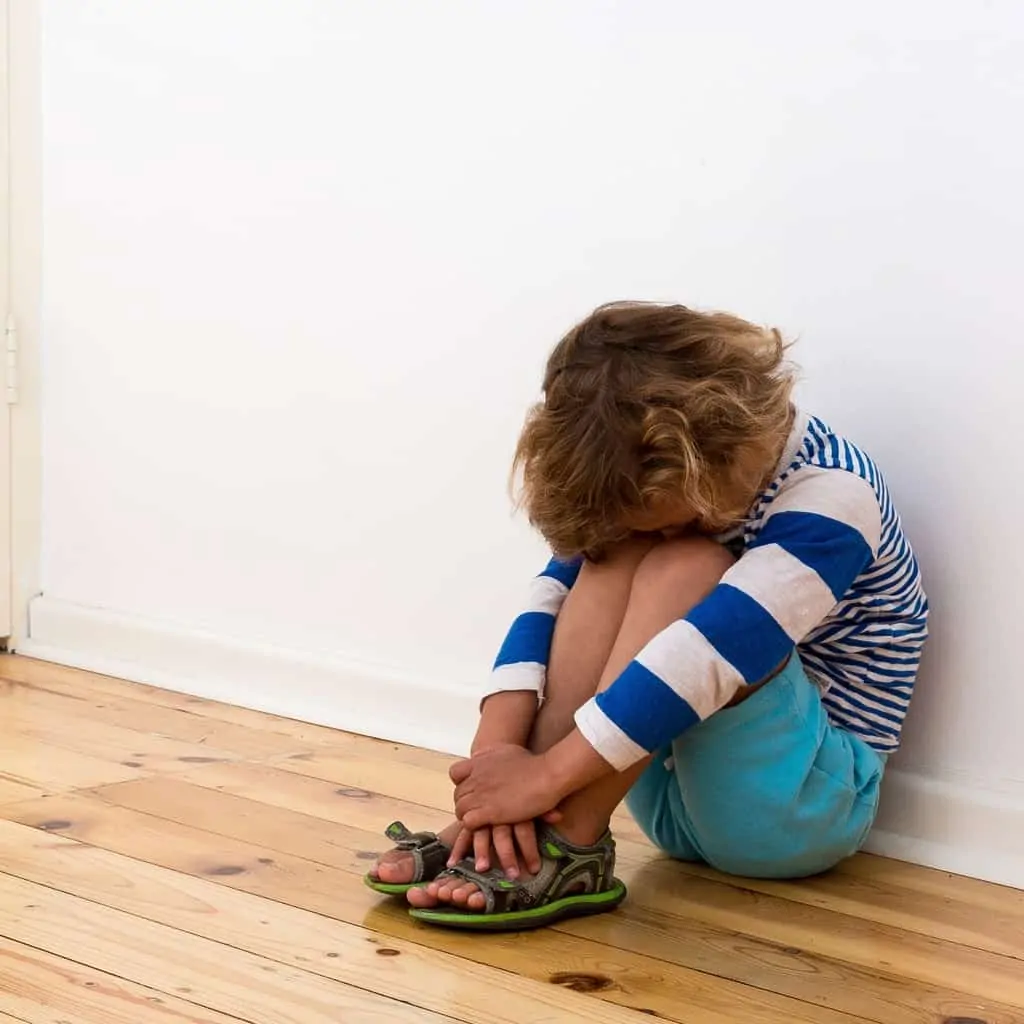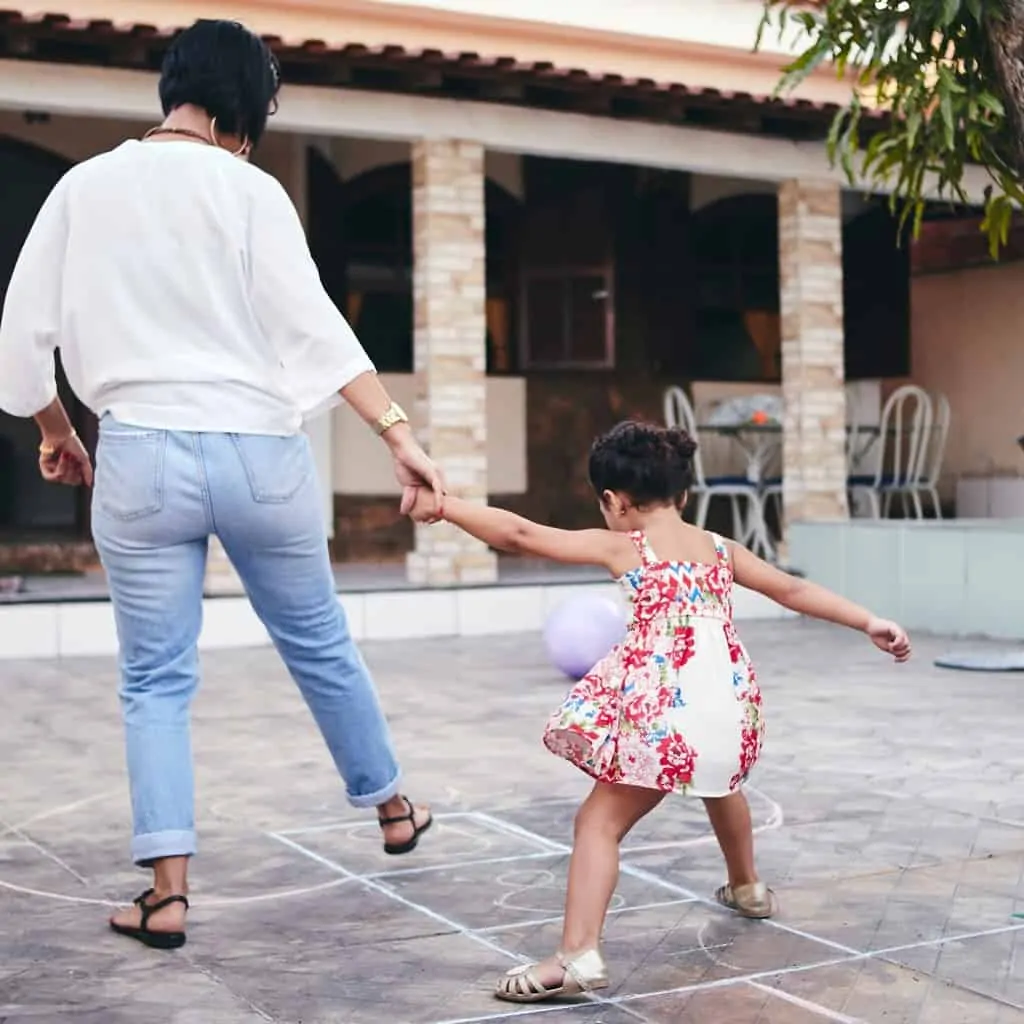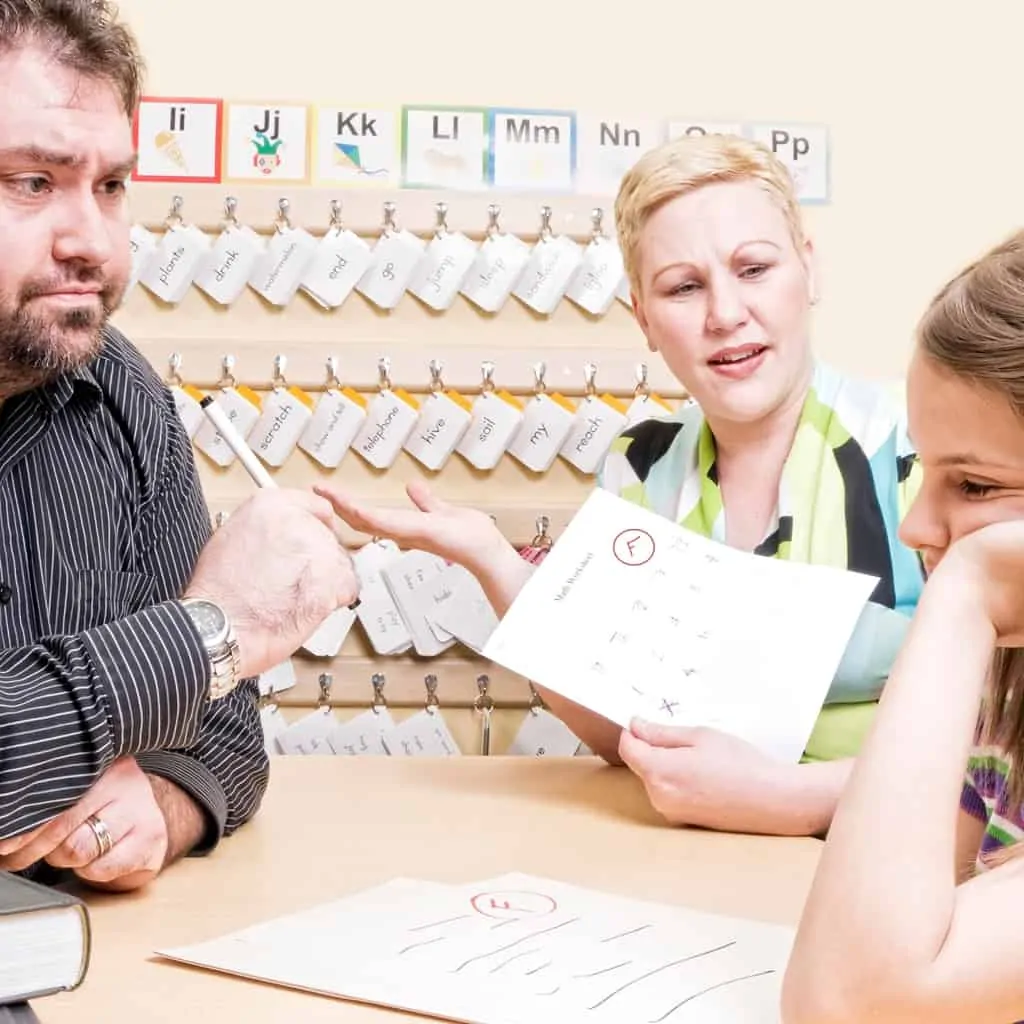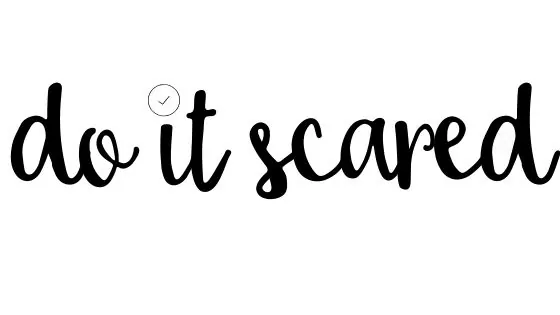How To Teach Your Kids to Stand Up To A Bully & What to Do If Your Is The Trouble-Maker
How To Teach Your Kids to Stand Up To A Bully & What to Do If Your Is The Trouble-Maker
You can’t be against bullying without actually doing something about it
Randi Weingarten
By definition, bullying is the intentional infliction of physical or emotional pain by a peer. There is also usually some form of mismatch. The bully is either older, bigger, stronger, more socially secure, more confident or holds some other type of advantage.
Repeated bullying can lead to negative self-esteem and mental health issues.
It’s bad enough that your child may fear attending school each day, but the long-term effects can be even more devastating.
Bullied children are more likely to struggle with anxiety, loneliness, and depression.
At the extreme, some children may even take their own lives rather than deal with more bullying. Sadly, this way of dealing with bullies has become all too common.
Over the years, bullying has become more aggressive and is starting at a younger age. Physical bullying begins in early elementary school, peaks in middle school, and declines in high school. Verbal bullying stays quite constant, regardless of a child’s age.
Here are the statistics surrounding bullying:
● Professionals estimate that over 160,000 children skip school each day to avoid bullying.
● There are over 3.2 million students bullied each year.
● Almost 1/5th of students report being bullied two or more times each month.
● 25% of surveyed teachers don’t believe there’s anything wrong with bullying.
● Two-thirds of students believe that schools do little to dissuade or intervene when bullying is reported.
● 10% of students drop out of school due to bullying.
Bullying (much like systemic oppression) has been going on since the beginning of time. But, being the norm doesn’t make it acceptable. There has never been more resistance to bullying, or concern for the damage it causes, than right now.
Take the time to help your child navigate bullying, whether they are the victim or oppressor.
Not everyone has been a bully or the victim of bullies, but everyone has seen bullying, and seeing it, has responded to it by joining in or objecting, by laughing or keeping silent, by feeling disgusted or feeling interested
Octavia E. Butler
Types of Bullying
While we all envision the kid being teased for his less than new clothes, curly hair, or the bully taking the little kid’s lunch money, there are several types of bullying.
All bullying can be damaging, and some types deemed criminal by the law. Bullying takes many forms.
Understand these different types of bullying:
1. Physical

This is the classic form of bullying. Many of us think of when we think of a bully. Physical bullies tend to be larger, stronger, and more physically aggressive than their average peers. This type of bullying is the easiest to detect.
The most common examples of physical bullying include:
● Hitting/punching
● Kicking
● Pinching
● Biting
● Pushing
● Tripping
● Throwing rocks or other items at the bullied child
● The stealing or destruction of property
2. Verbal
Many bullies keep their hands to themselves but use words to bully others. This can include insults, name-calling, teasing, gender-specific remarks, racially motivated remarks, or other types of verbal abuse. This type of bullying relies on continuous insults to cause harm.
● Those with physical or developmental disabilities are frequent targets of verbal bullying.
● Verbal bullying can be challenging to detect.
3. Social

Social bullying is harder to detect. It often involves intentional exclusion from social groups. This often happens on the playground or outside of school. Other examples include:
● Spreading damaging gossip or rumors
● Inappropriate jokes with the intention of causing emotional distress
● Anything with the intention of damaging the victim’s social acceptance
4. Cyber

With all the technology available today, it’s also easy to bully a child remotely. Computers and smartphones can be used as weapons against your child. Social media platforms make it especially easy to reach a large audience.
● Damaging messages, posts, pictures, videos
● Gossip and rumors
● Hacking
● The bully can also potentially hide their identity, which can embolden their bullying activities.
5. Sexual
Sexual bullying can include sexual comments, comments regarding attractiveness, inappropriate touching, propositioning, slut-shaming, and the use of sexual images. Sexual bullying can have all the components of other types of bullying.
● Taken to the extreme, sexual bullying can lead to sexual assaults.
There’s more than one type of bullying. Some bullies specialize in one type, while others avail themselves of all the opportunities. While bullying can take many forms, all can cause serious trauma. No type of bullying is acceptable.
Children should be able to live a life free from bullying and harassment, and it is time that we all took a stand against this
Katherine Jenkins
Which Kids Are Most Likely To Be Victims?
When a criminal goes looking for a someone to mug, they’re not looking for a fight. They’re looking for an easy victim. When a bully looks for someone to bully, he or she isn’t looking for a lot of hassle. They’re looking for an easy victim that will allow them to feel powerful. Bullies might not be so tough after all.
Some kids are more likely to be the victims of a bully than others. Some children would be nearly impossible to bully.
Bullying victims often have one or more of these characteristics:
1. Submissive
Remember that bullies aren’t looking for resistance. They’re looking for a victim. Children that don’t feel comfortable enough to stand up for themselves often draw the attention of bullies.
2. Insecure
Anxiety and other signs of insecurity are also attractive to a bully. These children lack assertiveness and often cry quite easily. Children that frequently complain of anxiety-related ailments, such as headaches and stomach aches, are often targets of bullies.

3. A lack of friends and social support
A child that has a weak social network in school can become a victim of bullying. Many bullying victims are viewed negatively by their peers.
4. Physically weak
Children that smaller, slower, and less athletic are more likely to be bullied. Poor performance in gym class or sports is common.
5. A quality that’s different from “normal”
This can be anything from having abnormally large ears to attending special education classes or having a speech impediment. Children that have gender identity issues are often bullied. The same goes for homosexual or bisexual students.
There are other qualities that are found in bullying victims. For example, male bullying victims tend to have overprotective parents. Female bullying victims tend to come from homes with emotional abuse.
If your child is a bullying victim, which qualities do they possess?
Make a list and begin brainstorming ways to address these issues.
Unless and until our society recognizes cyberbullying for what it is, the suffering of thousands of silent victims will continue
Anna Maria Chavez
Signs Your Child Is A Victim Of Bullying
Children aren’t always willing to tell a parent or other trusted adult that they’re being bullied. Kids report being too embarrassed or worrying that a parent will make the situation worse. Others mention fearing that the parent would simply tell them to “toughen up” and handle the situation themselves.
Even worse, some children report telling a parent, only to have the parent not believe them.
There are numerous signs that your child might be the target of a bully:
1. Physical marks, including cuts, scrapes, or bruises that your child won’t explain

Children will often respond that they “can’t remember” how the physical mark originated.
2. Attempts to avoid going to school

Remember, 160,000 children, skip school in one way or another to avoid a bullying situation. Does your child work hard to avoid going to school? There may be a reason other than not being a fan of school.
3. Fear of taking the bus to school
The school bus is a common location for bullying to occur. It’s one of the few places that younger students and older students mix for any appreciable length of time. It’s a perfect environment. The adult in charge is often too busy driving to pay attention to the behavior of the children.
4. Damaged books, toys, or electronic items
Is your child normally conscientious, but they appear to be failing to care for their items properly? Find out why.
5. Missing personal items, lunches, lunch money, or school supplies
Does your child seem to be losing items at an unreasonable rate? Get to the bottom of it. Is your child starving when they get home? That may be a sign that their lunch or lunch money is being taken.
6. Afraid of being at the bus stop alone
Or wanting to be picked up immediately after school. Some bullied children do everything they can to avoid being left alone for even a minute in the bullying environment.
7. Frequent trips to the school nurse
The common complaints are headaches and stomach aches. They will often ask to either go home or stay in the nurse’s office for as long as possible.
8. Sleeping difficulties
The child may have insomnia, nightmares, start wetting the bed, or cry himself to sleep.
9. Your child starts bullying other children. Many bullies are bullying victims.
If you discover that your child has begun bullying others, that can be a sign that your child is being bullied.
10. A sudden decrease in friends or a radical change in the child’s social group
This is a common sign of bullying.
11. Negative moods without an explanation

If your child appears depressed, fearful, sullen, anxious, angry, or moody in general, it’s possible that they’re being bullied.
12. Heads straight for the bathroom upon arriving at home
Bathrooms is a popular bullying location. There often aren’t adults in the area. If your child is waiting until they get home to use the restroom, inquire.
Many signs can point to bullying.
If your child is demonstrating any of these, it’s crucial to figure out if anything serious is going on. Remember that most children are hesitant to reveal any bullying activity. The burden is on you to find the truth.
I don’t know that there’s more bullying or whether it’s just more talked about. It seems to me that possibly that there’s been a lot of bullying all the time, but at the moment, it’s something that people are talking about
Susanne Bier
How to Prevent Your Child From Becoming a Bullying Victim
The best time to begin building a child-resistant to bullying is at a very young age, but it’s never too late to start! Just as certain children are likely to become the victim of a bully, there are also children that are unlikely to become the target of a bully.
Help your child to develop the skills and social support that will improve his odds of avoiding bullies.
Social Competence
Many children become bullying victims because of poor social skills and a lack of emotional intelligence. Learning basic social skills can go a long way toward avoiding bullies.
Use these techniques to help your child develop socially:
1. Arrange playgroups and play dates for your younger child

Many children are naturally shy and introverted. While we all seemed to play outside with our neighbors back in the day, this is much less common now.
Children that have few opportunities to play with children other than their siblings can fail to develop confidence and social skills.
There are many other parents in the same situation. It just takes one parent to reach out and begin the ball rolling. You might even make a friend for yourself in the process.
2. Consider sending your child to a good preschool
You can give your child a head start educationally and socially by sending them to preschool for a half-day if you can’t arrange other social opportunities.
3. Get your child in group activities
Give your child the chance to learn how to operate within a group of peers. Everyone needs to learn how to work a crowd effectively! A few ideas include team sports, 4H, dance classes, martial arts classes, theater groups, Boy Scouts, and Girl Scouts.
● Being part of a group can teach a child socially appropriate behavior.
● Group activities are a chance to begin building a social network.
● A child has more opportunities to learn how to deal with and meet new people.
4. Give your child the opportunity to be a cool kid
Allow your child to be current and relevant. You might believe it’s admirable to raise your child like it’s 1872, but that child will have a lot of challenges in school because of it. Give your child access to the things that are popular and relevant to his peers, with your supervision or approval.
For example:
● Music
● Movies
● Clothing
● Sports
● Video games
● Electronic devices
Social competence consists of things like the ability to interact normally with other children, the ability to make friends, recognize common social cues, and regulate emotions. When children struggle in these areas, bullies take notice.
When all of us are acknowledged as the human equals that we really are, there will be no space left for bullying. It will no longer be wrong to choose one thing over another
Jason Mraz
Self-Confidence
Children and adults all do better with a high degree of self-confidence. The comfort that a child enjoys from knowing he can handle anything day-to-day life throws at him helps to make him an unlikely bully target. Everyone can learn to be more self-confident, including your child.
Using these strategies will help you develop self-confidence in your child:
1. Ensure that your child feels loved at home

How confident can a child be if he doesn’t believe his own parents love him? It’s critically important for a child to feel loved, supported, and appreciated at home.
Love at home is the foundation for self-confidence in a child.
2. Have rules at home and enforce them consistently
Stability does a lot to foster confidence. Your child should know what to expect from you and your household. Kids feel a sense of security when they know the limits and predict what will happen in any situation at home.
3. Assist your child in setting and reaching goals
When someone can set and achieve goals, they realize that they have a degree of control over their life.
● At first, it’s important to set goals that are easily achievable. There’s nothing like a failure at a young age to destroy one’s confidence.
● Increase the difficulty of the goals as the child develops more confidence.
● Only help as much as necessary, which might be quite a bit at first. Slowly remove yourself from the process and allow your child to take more credit for their success.
4. Take good care of yourself
Show your child how to respect and love himself by setting a good example. Praise yourself when you do something well or just try hard. Explain to your child what it took for you to be successful. Explain that it took time and effort to develop your talents and skills.
5. Help your child deal with setbacks
Life often seems like little more than one setback after another. Resilience is an important skill for anyone to develop.
● Teach your child that failure is just a temporary result that provides an opportunity to learn.
● Show your child that setbacks are just a common part of life. It’s important to keep trying without getting too upset in the process.
6. Allow your child some independence
Give your child as much independence as they can handle. It might start out with allowing your child to dress themself or to pick out their own clothes. Some kids get a thrill out of packing their own lunch. Older kids can help plan family trips or change the oil in the car.
● Avoid treating your child as if they were younger than they are.
7. Encourage a sense of adventure

Encourage your child to try new things: a new sport, art classes, taking short trips out of town as a family, exploring a new park. The ability to tackle new things helps to develop confidence.
8. Help your child explore a passion
It might be sports, writing, gardening, or playing the guitar. The type of activity doesn’t matter, as long as they have an interest in it. Allow your child to chase their own interests.
A confident child is a happy child.
If your child lacks self-confidence, they’re likely to be anxious and lack self-assuredness. These are traits often found in bullying victims. Help your child to realize how wonderful they are and give them the confidence they need to face the world.
If we are to stop bullying in schools, we have to start with teachers and administrators. If we want to stop it, we have to stop it
Chris Crutcher
Communication Between You and Your Child
Communication is the bedrock of any relationship, including the relationship between a parent and a child. Having a strong relationship with your child will make him more resistant to bullying. It will also increase the odds that your child will share if they are being bullied.
You’ll be in a better position to help put an end to any bullying quickly if you are kept in the loop. You can’t fix what you don’t know.
Try these techniques to strengthen the bond with your child through the power of communication:
1. Avoid marginalizing your child’s feelings
As an adult, it might seem trivial for a child to be upset about a broken toy, a bug, or the failure of a teenage romance. But that’s not how your child sees it.
2. Be a great listener
Pay attention when your child is speaking to you. That means putting your cell phone away until the conversation is over. Maintain eye contact. Nod your head.
● Pay attention to your child’s body language. It’s easier for a child to lie with their mouth than their body.
3. Ask questions
Questions demonstrate that you’re interested and paying attention. You also have the chance to clarify what you’re being told. Ensure you understand what your child is trying to tell you.
4. Speak regularly
Develop a routine of asking your child about their day. Ask them for their opinion on a variety of topics.
If you make a habit of talking about the small stuff, the big stuff will be easier to manage when it comes along.
Talk to your child in a meaningful way each day.
5. Be open with your child
Discuss your day and your feelings with your child. Obviously, this doesn’t mean sharing everything. Avoid topics that are beyond your child’s ability to process and handle.
● The more open you’re willing to be with your child, the more you’ll get in return.
6. Avoid trying to problem-solve too soon
We often want to jump to the end and is working on solutions. Children want to know that you’re listening to them and hearing everything they have to say.
The sooner you start strengthening the communication between you and your child, the better.
It’s much more challenging to begin working on this with a teenager.
You’ll stand a better chance of success if you develop good communication habits with a younger child and then work hard to extend them through the teen years.
Your child will be more confident if you have an open relationship with them. You’ll also be more likely to be notified of any challenges your child might be facing.
The solution to putting an end to bullying is to stop it at the source but also to find out what is causing the person to behave the way that they do
Hunter King
Assertiveness
Assertiveness is making your opinions, feelings, and needs known in an acceptable manner. It’s standing up for yourself and the ability to demand to be treated fairly. All of this is done in a way that respects the rights and feelings of others.
Many children lack the confidence to be assertive.
Many children are naturally passive and erroneously believe that this approach will help them to be popular.
After all, if you’re easy to get along with and put everyone else first, you’ll be liked.
That sounds logical, but bullies aren’t always reasonable. They see a lack of assertiveness as a sign that someone that won’t fight back.
Consider these ideas to help your child develop assertiveness:
1. Explain what assertiveness is and why it’s important
It’s just as important for you, as a parent, to understand the difference between assertiveness and aggressiveness. There’s a difference between directness and meanness. Teach your child, so there’s no confusion.
2. Praise your child when they show assertiveness
When a child is direct and voices their opinion appropriately, thank them.
3. Explain the boundaries in your child’s life
This takes many forms. Things like respecting the feelings and property of others. A child should understand who can and can’t touch their body, as well as what type of touching is appropriate.
● Understanding boundaries gives a child a reference point. They know they need to be assertive when a boundary is being violated.
4. Point out when your child isn’t assertive
Teach your child by informing them when they’re failing to be assertive.
● “You weren’t assertive when you allowed that girl to just take your doll from you. Next time, I’d like you to say, “That’s my doll, and I’m not done playing with it. You can use it when I’m done if you ask.”
● Your child will eventually catch on.
There are plenty of opportunities to be assertive, such as: asking for favors, starting conversations, saying “no,” being firm, expressing emotions, and sharing opinions. Help your child to develop these habits and skills.
Assertiveness will benefit them throughout their life.
When I got older, it got harder because when kids get older, they get meaner, so I went through a lot of bullying and people calling me, like, ‘zebra’ or ‘cow,’ so it was really hard growing up
Winnie Harlow
Self-Esteem
Self-esteem is the value we assign to our worth. If a child believes he’s valuable and important, his self-esteem will be high. A child with low self-esteem feels just the opposite.
Children with low self-esteem attract the attention of bullies.
A child with a high opinion of himself will be happier, more successful, and repel bullies.
Self-esteem is a critical component of contentment.
Help your kids feel good about themselves with these tips:
1. Provide your child with choices
It could be choosing the menu for dinner or allowing them to pick out their next pair of shoes. Children need to know that their opinion matters and that they have some influence over their lives. Feeling empowered can raise self-esteem.
2. Teach your child that no one is perfect all the time
Let them know that mistakes are normal. Teach them that a person doesn’t have to be perfect to be a good person.
3. Give honest praise
Children can recognize false praise. There’s a difference between praising your daughter’s drawing of a tree with “That’s a nice tree. I really like how you did the leaves” and “Wow, you just might be the best artist in the entire world.”
4. Give your child a few chores appropriate to their age and capabilities

Having responsibilities and fulfilling them is a great way to build self-esteem. You might consider having your child:
● Walk or feed the dog
● Take out the trash
● Vacuum the living room
● Set the table
● Mow the grass
● Do their own laundry
5. Point out your child’s strengths
We all feel better about ourselves when someone acknowledges the things we’re good at. Make a comment about your child’s intelligence, athleticism, compassion for others, or artistic abilities. What is your child good at? Mention it.
6. Spend some one-on-one time with your child

This is a great way to strengthen your bond. A little personal attention never hurt anyone, either.
● Let them know you find them interesting and important enough that you want them all to yourself at least once a week.
Self-esteem is an accurate predictor of school achievement, happiness, relationship success, and criminal behavior.
There are few things you can do for your child more important than convincing them that they are important and have value.
This is a primary responsibility of a parent. How well are you performing it?
The fact that I was black and desirous to do my work, the other kids would call me a coconut, as if I were somehow attempting to be white. The bullying was real: I’d get punched, spat at, terrible things
David Oyelowo
What To Do If Your Child Is Being Bullied
Even the greatest and most amazing kids can become bullying victims. The first rule is to not panic. Odds are that the bullying isn’t too severe. But even if it is, the best course of action is to find out the details, put a stop to it, and give your child whatever support is needed.
Most kids are bullied at least once in their lives. You can help your child through this.
Use these tactics to put a stop to the mistreatment of your child:
1. Be emotionally supportive
Whether your child came to you with the information, or you deduced the situation yourself, your child is anxious, stressed, and afraid.
● Be supportive and understanding.
● Assure your child that the matter will be handled.
2. Gather information about the bully and the bullying
Think of yourself as a detective. Find out as much as you can about the situation. It will help the teacher, principal, and even the police, if necessary. Try to determine:
● The name and age of the bully
● When the bullying started
● Where the bullying occurs. Hallways? Outside? Cafeteria? Bus stop? Restroom?
● When?
● The form of bullying. Is it physical? Sexual? Verbal? Social? Cyber?
● Who else has seen the bullying? This includes other students, as well as teachers and other staff.
3. Determine if the police need to be contacted
The police probably don’t need to know if your child is being teased for their curly hair. They certainly need to know if your child is being groped inappropriately. Follow your instincts.
● You might want to have a discussion with the principal first. Perhaps he would prefer to be the one to contact the police. However, the decision is ultimately yours to make.
4. Contact the child’s teacher and principal. Email the teacher and principal and set up a time to go speak with them.

● Bring all the information you have with you. They’re going to ask a lot of questions. The process will move along more quickly if you have the information they need.
● Ask them what the next steps will be.
● Ask for a timeline.
● Be assertive. If the bullying is severe and worthy of police involvement, the principal might try to dissuade you from involving the authorities. The last thing some principals want is to explain to their boss why the police are asking questions. This isn’t always true, but be aware of it.
● If you’re not satisfied with the answers you receive, consider contacting the school district superintendent, too.
5. Avoid the temptation to contact the parents of the bully
This is a common response after finding out that your child is being bullied. Unfortunately, it’s usually not a good idea.
● It’s generally best to give the school a chance to resolve the issue. They have more experience than you do. It’s also easy to get yourself in a lot of trouble if your emotions get out of hand.
6. Ask your child’s teacher for advice regarding challenges your child may be having
Find out why your child might be having such a hard time. Are they unkind to the other kids? Socially awkward? Do they read aloud poorly? Discover what’s going on.
● Ask for suggestions. Maybe your child needs guidance or assistance from you. Perhaps some stronger social skills would be helpful.
7. Determine if your child might need counseling
Depending on the severity of the bullying, your child might need professional help. Just because the bullying has stopped doesn’t mean there isn’t still damage that needs attention and repair.
8. Follow-up
Ask your child regularly how things are going. Bullying often stops abruptly but starts back up when the bully thinks everyone has moved on. Keep the lines of communication open with your child.
● Follow up with the principal and teacher, too. This will keep them sensitized to the situation. Everyone is busy, and the squeaky wheel gets the grease. Squeak occasionally.
It can be traumatic to be the parent of a bullied child.
Few things are as heartbreaking as learning that your child is being tormented and is afraid of going to school.
However, your child can survive this time in their life, and go on to thrive, with your assistance.
Simple peck-order bullying is only the beginning of the kind of hierarchical behavior that can lead to racism, sexism, ethnocentrism, classism, and all the other ‘isms’ that cause so much suffering in the world
Octavia E. Butler
What To Do If Your Child Is A Bully
Bullying always requires at least two people, a bully, and a victim. If you’re the parent of the bully, rather than the bullied, it’s important to help your child to overcome this behavior. It benefits your child and the children he’s tormenting.
Who Are Bullies?
Putting an end to this type of behavior can save your child a lot of grief later in life.
Adult bullies frequently find themselves in prison sooner or later.
Who are these children that appear to take such pleasure in making others miserable? That’s a complicated question. There are a wide variety of reasons that someone might exhibit bullying behavior. However, many bullies have issues at home or are themselves the victims of bullying.
Consider these ideas:
1. Bullies can envy and resent their victims
A bully might be jealous of another student’s popularity or success in school. This resentment can result in bullying behavior.
2. Bullies can be arrogant and narcissistic
Many bullies simply think they have the right to treat others any way they can get away with. This type of bully honestly believes he is entitled and struggles to understand that he’s doing anything wrong.
3. Bullying can be used to hide the shame and to boost self-esteem
Bullies feel a little better about themselves after terrorizing a peer. This boost in self-esteem can be addictive. Many bullies use bullying to distract themselves from their shame.
4. Some bullies want to fit in with classmates that are bullies
So, they join in and become bullies themselves.
5. Many bullies are bullied themselves
Bullies are often victims themselves. Many are physically, sexually, or emotionally abused at home.
6. Bullies often report living in a competitive home environment
Not all households are loving and supportive. Many revolve around domination and exerting power over each other. The bully has learned this mentality and carries it with him outside the home.
● They have little control over their lives at home, so they try to exert influence outside the home.
7. Some bullies have inflated, but fragile egos
A bully with this tendency thinks a lot of himself, and he is easily offended. He then feels justified in lashing out at his detractors. This becomes a habit, and the same behavior is applied in other situations.
8. Bullies may have poor emotional regulation
While most toddlers learn to soothe themselves and regulate their emotions, many bullies lack this skill. This may be due to upbringing or a genetic predisposition.
Research has shown there are a variety of reasons and motivations for bullying. There appear to be some genetic influences too.
There are also issues related to the bully’s upbringing and treatment, and many bullies are victims themselves.
Most bullies are deserving of at least a little sympathy.
Keep in mind that bullies can be male or female.
Male bullies are more likely to exhibit physical or sexual bullying than female bullies. Female bullies are more likely to participate in social bullying. In the early teen years, females are actually more likely to be bullies than males.
Each bully and his or her situation is unique.
If we’re going to make a real dent in the bullying issue, we’re going to have to address the bullies themselves: find ways to help empower them that don’t include allowing them to be predators or to simply be punished
Chris Crutcher
Confronting Your Child
If you receive information that your child is bullying others, it’s time to have a conversation. The good news is:
There’s a lot you can do to help him!
Help your child overcome his bullying behavior with these strategies:
1. Be direct with your child and ask for their side of the story
Let them know you’re concerned and ask them what’s going on. Just be quiet and listen to their side of the story before commenting.
2. If the child denies any wrongdoing, dig deeper
Again, pretend you’re a detective and get to the bottom of the matter. Find out everything you can. Talk to everyone you can.
● Avoid blindly believing your child. Accept the possibility that your child is making someone else miserable and potentially harming himself in the process.
3. If the child admits to the bullying, find out the motivation
Be concerned rather than furious. Determine the cause of this behavior.
● Is your child being bullied, too?
● What does he get from being a bully? What does he gain by behaving this way?
4. Speak with your child’s teacher and ask for advice
They might have some insight on the matter.
5. Examine your child’s home life

What is it like in your home? Is it a loving, comfortable environment? Could the atmosphere or other circumstances in your home be contributing to their challenges?
6. Ask your child to consider how they would feel under similar circumstances
● “Has anyone ever made fun of you for the way you look?”
● “How did that make you feel?”
● “Do you really want to make someone else feel that way?”
7. Communicating effectively with your child is an excellent way to both prevent and resolve bullying issues
Remember that most bullies are having at least some issues at home.
● Strengthening your bond with your child can only help. If your child feels comfortable communicating with you, many issues can be resolved before they get out of hand.
8. Create a plan

The plan will depend on the information you receive on the situation. Determine the issues that are driving your child to bully others and begin working toward a resolution.
● Let your child know what you expect from them. “I expect you to stop teasing other kids. If you don’t have anything nice to say, I expect you to not say anything at all.”
● Follow up regularly with your child and the school. Ensure that the bullying has stopped.
● Be willing to punish your child appropriately. Bad behavior should have consequences. For example, if your child engages in cyberbullying, you might take away their cell phone and internet privileges for a week.
9. Consider getting professional assistance
If your child is depressed or anxious, it might be necessary to get help. Some situations require the help of an expert. It can also show your child that bullying is serious.
Some children act out by making others miserable.
Get to the root of the issue and determine why your child is behaving this way.
There might be something bothering them so much that they’re acting out. You might be able to quickly put an end to it by resolving the circumstances that are bothering them.
If you can’t make meaningful progress on your own, you might want to consider getting help from a mental health professional that specializes in conduct disorders.
I don’t know that there’s any rhyme or reason to bullying… it’s not even the bully’s fault, which is why it’s such a difficult thing to combat
Dove Cameron
A significant percentage of school-age children are bullied each year. Bullying is a leading cause of absenteeism, truancy, and dropping out. Bullying can lead to mental health issues and even suicides in extreme cases.
Bullies can come in all shapes and sizes. There are many reasons why someone might exhibit bullying behavior. Many bullies are or have been bullied themselves. Many bullies have problems at home. As the parent of a bully, it’s important to determine the cause of this behavior.
If your child is being bullied, it’s critical to take it seriously.
While the behavior of children seems trivial to many adults, it’s can be very painful and damaging to a child.
The fear, anxiety, and damage to a child’s self-esteem can become a lifelong burden. Avoid taking it lightly.
Whether your child is doing the bullying or receiving the bullying, involve the school, and ask for advice and assistance. They are with your child all day. They’re bound to see things and have insights you don’t.








